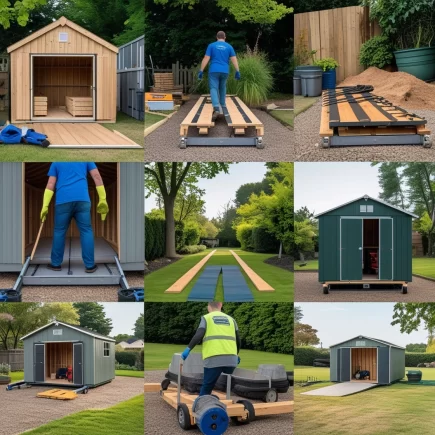A shade sail is more than just a functional item to block the sun. With the right installation, it can elevate your outdoor space, turning a simple patio or garden into a cozy retreat. Shade sails provide exceptional UV protection, help regulate temperatures, and add an elegant, modern aesthetic to any outdoor area. Choosing between installing a shade sail yourself or hiring a professional installer depends on several factors, including your budget, expertise, and the nature of the project.

In this guide, we’ll provide step-by-step instructions for DIY and professional installation and discuss key considerations such as costs, materials, and hardware.
DIY Installation: Step-by-Step Process
Installing a shade sail yourself is not as difficult as it may seem. By following a few key steps, you can have your sail up and ready to use in no time. Below is a detailed, step-by-step guide to DIY shade sail installation.
Tools and Materials Needed
Before you begin the installation process, make sure you have the following tools and materials:
- Shade Sail: Choose the appropriate size and shape based on your space.
- Measuring Tape: Essential for accurate measurements.
- Power Drill: For drilling holes in posts or walls.
- Turnbuckles and Snap Hooks: These are part of the installation kit used to tension the sail securely.
- D-Rings: Used to attach the shade sail to the hardware.
- Rope: To secure the sail and adjust tension.

Step 1: Measure the Area
Before you purchase or install your shade sail, accurately measure the area you wish to cover. This step is crucial for a proper fit and a professional-looking result.
- Sketch a layout of your space, including fixed objects like trees, buildings, fences, or existing poles.
- Measure the distances between potential attachment points. This helps determine the ideal shape and size of your shade sail (e.g., triangle, square, or rectangle).
- Consider clearances: Leave a gap of 10 to 20 inches (25 to 50 cm) between each corner of the sail and the attachment point to allow room for tensioning hardware like turnbuckles and snap hooks.
- Think about orientation: Factor in the path of the sun to maximize the shade where you need it most (e.g., over a patio or play area).
Step 2: Identify Attachment Points
Shade sails rely on solid, stable anchoring to stay secure in all weather conditions.
- Choose strong points such as house walls, wooden posts, metal poles, or mature trees. These must be able to handle high tension and wind loads.
- Number of points needed:
- Triangle sail: 3 points
- Square or rectangular sail: 4 points
- If no suitable anchors exist, install posts using concrete footings. Posts should be galvanized steel or pressure-treated wood, and ideally set at a slight angle (away from the sail) for added strength.
- Ensure that all attachment points form a layout that keeps the sail taut and angled (at least one low point for drainage).
Step 3: Install the Hardware
Once your attachment points are selected, you need to set up the necessary hardware.
- Typical hardware includes:
- D-rings (pre-sewn into the sail corners)
- Turnbuckles (to adjust and maintain tension)
- Snap hooks or carabiners (for quick attachment and removal)
- Pad eyes or eye bolts (mounted on structures or posts to serve as anchor points)
- Installation tips:
- Use stainless steel hardware for outdoor durability.
- Drill into structural framing if attaching to a building (not just siding).
- Mount hardware with spacing in mind, ensuring the tensioning system has room to operate.
- Always follow manufacturer guidelines for hardware spacing and placement.
Step 4: Hang the Shade Sail
With all the anchor hardware in place, it’s time to hang the sail.
- Start with one corner: Attach the D-ring to the snap hook or turnbuckle at the first anchor point.
- Move clockwise or counterclockwise: Continue attaching each corner, leaving some slack for adjustments.
- Make sure the sail is positioned evenly and not twisted.
- If using more than one sail, make sure they overlap slightly or have gaps between them to avoid excessive strain or rubbing.
Step 5: Tighten the Sail
Proper tensioning is the key to both performance and longevity.

- Use turnbuckles to gradually increase tension at each corner. Tighten evenly across all corners to distribute force.
- A properly tensioned sail should be:
- Firm with minimal sag
- Wrinkle-free
- Angled for water runoff
- Avoid over-tightening, which can damage the fabric or hardware over time. The sail should feel firm but not stretched to the point of strain.
Step 6: Final Adjustments and Inspection
Once your sail is up and tightened, do a thorough check.
- Inspect each attachment point to ensure it’s secure and stable.
- Check the tension at each corner and re-tighten if needed after a few hours or days, as fabric may settle.
- Ensure proper slope for rain runoff (ideally a difference of 1 to 2 feet between high and low corners).
- Look for obstructions like branches or gutters that may interfere with the sail in wind or rain.
- Maintain regularly: Over time, you may need to retighten the sail or check for corrosion or wear on the hardware.
To make the most of your DIY installation, we recommend using high-quality shade sails like the Outsunny 13′ x 20′ Sun Shade Sail Canopy, which offers excellent durability, UV protection, and cooling benefits.

DIY Installation Costs and Considerations
While DIY installation can save you money, it’s important to account for the costs of materials and tools. Here’s a breakdown of the expected costs for a typical DIY shade sail installation:
| Item | Estimated Cost |
| Shade Sail (13′ x 20′ Rectangle) | $50 – $150 |
| Installation Hardware Kit | $20 – $50 |
| Tools (if needed) | $50 – $100 |
| Total DIY Installation | $120 – $300 |
Time Commitment
Depending on the size and complexity of the installation, you should expect to spend at least 4-6 hours installing your shade sail. This estimate includes time for measuring, installing hardware, and adjusting the sail for optimal tension.
If you’re unsure about your ability to handle the project on your own, hiring a professional might be a better option, especially for larger installations. However, for smaller spaces, DIY installation is often the most cost-effective and satisfying option.

You are protecting your patio, pool area, or garden from the sun, a shade sail will provide lasting benefits, including UV protection, cooling, and a stylish outdoor space to enjoy. Be sure to choose the right product, follow the installation steps carefully, and enjoy your new shaded area for years to come.
FAQs
1. How long do shade sails last?
The typical lifespan of a shade sail ranges from 5 to 10 years with proper care. High-quality, UV-resistant fabrics generally last longer and withstand environmental stress better over time. A well-executed installation is also essential, as it helps prevent sagging and structural damage that can shorten the sail’s useful life.
2. How do I ensure my shade sail is installed properly for water drainage?
To ensure proper water drainage, angle the shade sail slightly so one side is lower than the other, typically with a 1 to 2 feet difference in height. This allows rainwater to run off easily and prevents pooling that can damage the sail or hardware.
3. Can I use my existing fence or wall as an anchor for the shade sail?
Yes, you can use your existing fence or wall as an anchor, provided it is sturdy enough to handle the tension from the shade sail.
4. How do I prevent my shade sail from sagging over time?
To prevent sagging, ensure the shade sail is properly tensioned when installing. Use turnbuckles to adjust the tension at each corner and check periodically for any slack. Retightening the sail after installation helps maintain its firmness and shape.





















